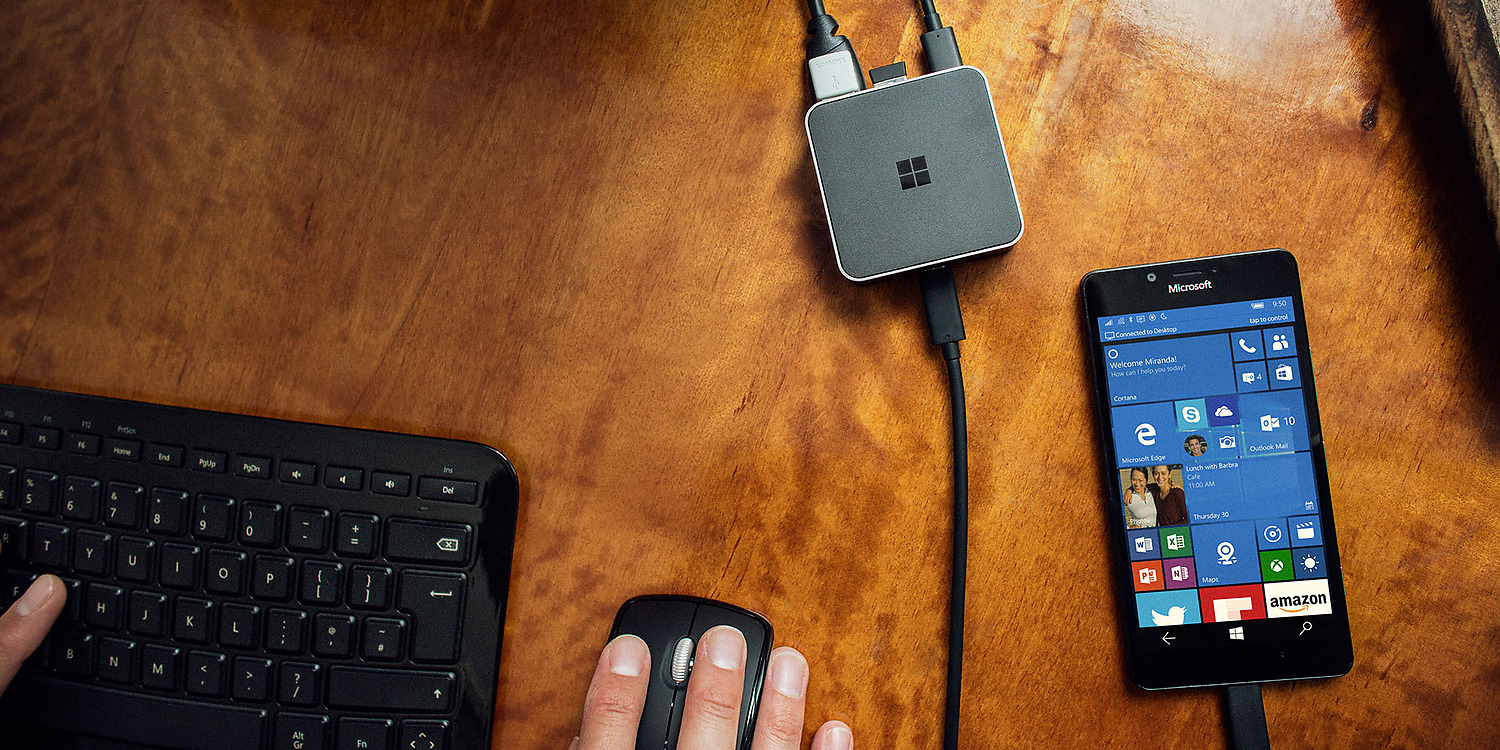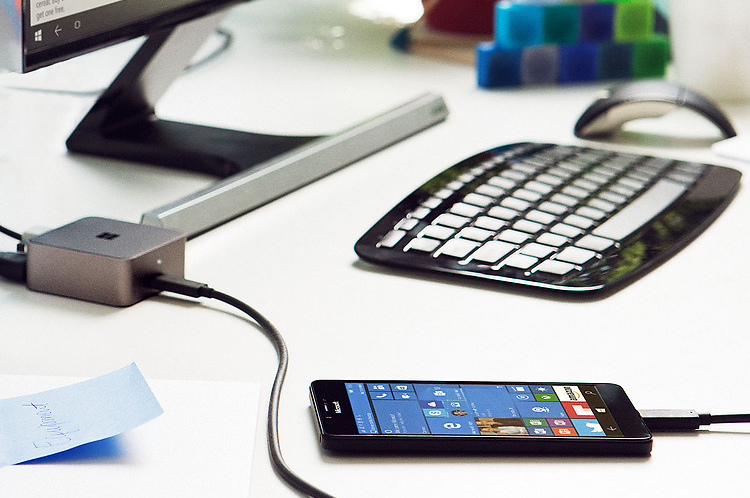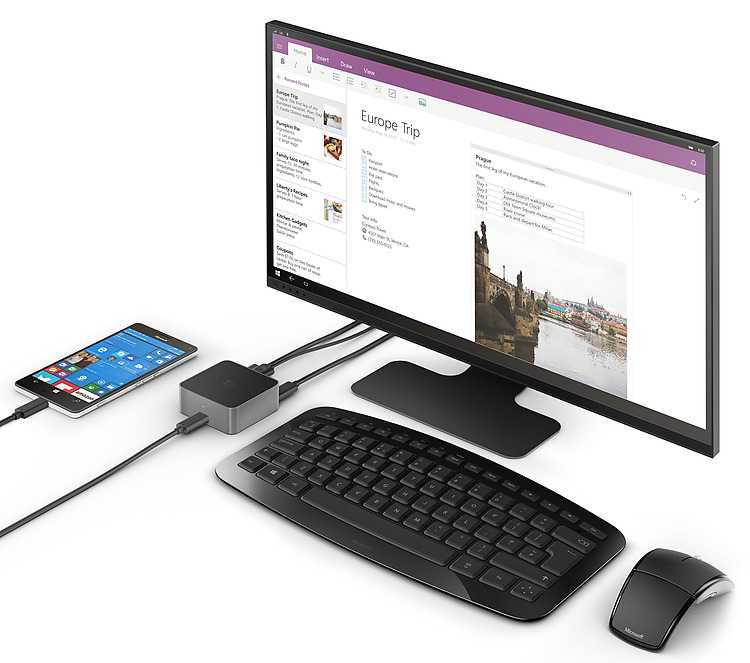Windows 10 Mobile Coming Next Month, More Lumia 950, 950 XL Details Emerge (Updated)
Microsoft announced its new flagship smartphones, the Lumia 950 and 950 XL, today at its event in New York City. The onstage presentation left us with a number of lingering questions, and even when Microsoft published full specs for the two devices, some blank spots remain.
We've been pestering Microsoft's PR firm for answers, and although we're still waiting on some, we did get a few bits of clarifying information.
Windows 10 Mobile Coming In November December
Microsoft's materials indicated that the new phones are running "Windows 10," which doesn't make sense. There's a mobile variant of Windows 10 coming, but we're all still waiting for its rollout, and the company had not stated when that would even happen. So what did Microsoft mean by "Windows 10?"
The company's PR firm clarified that the phones will indeed run Windows 10 Mobile. Because they're shipping starting in NovemberNovember
USB Type-C Port
With apologies to those of you who have seen this link dozens of times already, when manufacturers state that a device has a "USB Type-C" port, that doesn't tell us anything at all about what protocols are supported over that Type-C connection on a given device.
Microsoft was no exception, offering zero details on what the Lumia 950/950 XL handsets offered beyond "fast charging." However, we have learned that the transfer speeds it offers are up to 5 Gbps, which means that the port supports USB 3.1 Gen1 "SuperSpeed." We have also surmised, by looking at the specs and support afforded by the Display Dock, that the USB Type-C port on the new Lumias supports DisplayPort.
A Game-Changer: Microsoft Display Dock
Microsoft has apparently followed through on its promise from back at Build, by offering a technology and a piece of hardware that lets your phone function as a de facto PC.
Get Tom's Hardware's best news and in-depth reviews, straight to your inbox.
That technology, which both the new Lumias support, is Continuum -- the technology that, among other things, allows you to connect your phone to a monitor and see its contents and apps displayed as if it were a PC. The piece of hardware is the Microsoft Display Dock (HD-500).
It's an optional feature, but it could be a total game-changer for many workers who find themselves frequently in and out of the office (or home, for that matter). The compact dock, which is just 64.1 x 25.6 x 64.1 mm (WxLxH), has the USB Type-C connector to connect the phone -- which will charge the handset -- as well as DisplayPort, HDMI, USB 2 (x2), and USB 2.0 (high current charging port). It also supports DisplayPort over USB Type-C.
If you're ticking off your peripherals, you could connect a mouse and a keyboard, at least one monitor, and another USB device such as external storage. (It's not clear if the dock supports multiple displays. The product page states support for 1080p HD, and then after an asterisk, says, "Additionally up to 1200p (WUXGA, 1920 x 1200) supported.")
It also supports HDCP 1.3/1.4, and the product page states that it offers a 60 fps refresh rate.
What are your lingering questions about the Lumia 950 and 950 XL?
Update, 10/6/15, 1:45pm PT: The Display Dock is expected to cost $99 when it becomes available, roughly at the same time the Lumia 950 and 950 XL land.
Update, 10/14/15, 12:20pm PT: Microsoft clarified that Windows 10 for phones, and the Lumia handsets, will start rolling out in December, not November. We have adjusted the article with the new information.
Seth Colaner is the News Director at Tom's Hardware. Follow him on Twitter @SethColaner. Follow us @tomshardware, on Facebook and on Google+.
Seth Colaner previously served as News Director at Tom's Hardware. He covered technology news, focusing on keyboards, virtual reality, and wearables.
-
sykozis How bad are the prices going to be for the Lumia 950 and the Dock? If priced right, I'll switch back over happily.Reply -
RedJaron I'm guessing this desktop ability is unique to the 950 and it's USB 3.1 port. Older phones may be able to upgrade to Win 10 Mobile, but will they get the ability to do this as well? Methinks not, unfortunately.Reply -
bourgeoisdude We don't know the price for the dock yet. In the states, Lumia 950 costs $549 off contract and the 950 XL costs $649. Not bad compared to iPhone pricing. My question is what carriers will offer them?Reply -
scolaner Reply16740181 said:How bad are the prices going to be for the Lumia 950 and the Dock? If priced right, I'll switch back over happily.
Just found out: $99. -
jimmysmitty Reply16740194 said:I'm guessing this desktop ability is unique to the 950 and it's USB 3.1 port. Older phones may be able to upgrade to Win 10 Mobile, but will they get the ability to do this as well? Methinks not, unfortunately.
Probably not for most as it probably needs a certain bandwidth to support HDMI or DP out as well as HDCP support.
It is a new tech so I think we will probably have to wait and see. I am excited for it. Might move from my S6 to one of these but I also want wireless charging. It is nice to not have to worry about plugging it in and just sitting it down on the wireless charger. -
RedJaron The 950 has wireless charging. It's one of those things I didn't think much of at first, but having it and being able to just drop the phone on a plate instead fiddle with cables is pretty nice.Reply -
theyeti87 Windows Phone operating system is still garbage, not to mention the ghost-town of a marketplace YEARS after its inception.Reply -
scolaner Reply16740650 said:16740194 said:I'm guessing this desktop ability is unique to the 950 and it's USB 3.1 port. Older phones may be able to upgrade to Win 10 Mobile, but will they get the ability to do this as well? Methinks not, unfortunately.
Probably not for most as it probably needs a certain bandwidth to support HDMI or DP out as well as HDCP support.
It is a new tech so I think we will probably have to wait and see. I am excited for it. Might move from my S6 to one of these but I also want wireless charging. It is nice to not have to worry about plugging it in and just sitting it down on the wireless charger.
Continuum support is pretty much baked into Windows 10. Basically, if a touchscreen convertible, laptop, or 2-in-1 device supports Windows 10, it supports Continuum.
Granted, it's my understanding that Continuum *may not* be supported on all handsets. I'm not sure if this is 100% true--Microsoft has been cagey about giving me clear answers on that front--but it makes sense. Continuum seems like something that a lower-end handset would struggle with.
For example, Microsoft notably made no mention of Continuum support on the low-end Lumia 550 announced today. I'm guessing the omission was intentional.
What can help is if you start with the list of phones that will support Windows 10: http://blogs.windows.com/windowsexperience/2015/03/27/a-quick-update-on-windows-10-builds-for-phones-for-windows-insiders/
Only phones on that list will support Continuum, because Continuum is part of Windows 10. Some of the phones on that list that support Windows 10 may not support Continuum.
Anyway, that's a good question. We'll see about some answers. :)
-
RedJaron Reply
Care to qualify or define that, particularly by providing evidence and metrics?16740811 said:Windows Phone operating system is still garbage, not to mention the ghost-town of a marketplace YEARS after its inception.
-
manitoublack This is what I've been hoping to see with Type-C devices. Yes the old Sony's had a dedicated micro-hdmi port and more modern android devices have had the 5 to 11 pin usb/hdmi combined plugs, but the solution always seemed half baked (especially the software side.)Reply
Credit where credit is due. With the office mobile package now quite mature and continued improvements in onedrive, outlook.com and office 365. I can sea future where 90% of desktop office punters no longer need a full blown PC. As horsepower, security and optimizations of the mobile space make the smart phone the de-facto computer.



